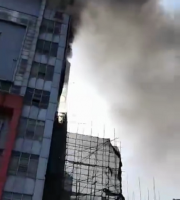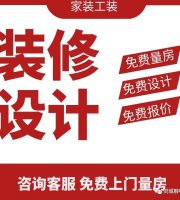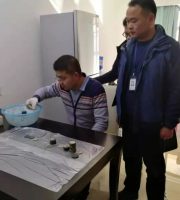1、 How to judge whether it is shoddy? Cutting corners is a kind of behavior that all parties of engineering construction take their own economic interests as the starting point to reduce the engineering quality standards, violate the engineering construction quality acceptance specifications, and escape the quality supervision and acceptance procedures
. 
Strictly speaking, it is an illegal behavior
. 
1、 How to judge whether it is shoddy? Cutting corners is a kind of behavior that all parties of engineering construction take their own economic interests as the starting point to reduce the engineering quality standards, violate the engineering construction quality acceptance specifications, and escape the quality supervision and acceptance procedures
. 
Strictly speaking, it is an illegal behavior
. 
1
. 
It mainly involves three related parties: the construction party: in order to reduce the project cost, the design party and the construction party are required to adopt or use low-quality materials and components for design and construction
. 
Construction unit (including general contractor, subcontractor and team): the material quality is lower than the design and specification requirements, and the construction process is not carried out according to the construction process standard and quality acceptance standard
. 
Supervision unit: failure to perform supervision duties, failure to strictly implement acceptance procedures, etc
. 
The general contractor is the organizer and direct controller of engineering construction, and the core and key subject of engineering quality control
. 
It should play a leading role in preventing engineering construction from cutting corners
. 
2
. 
Second, what are the common forms of shoddy workmanship? 1
. 
Reinforcement engineering 1) reinforcement binding is too sparse, skipping binding, missing binding, especially the beam bottom reinforcement
. 
2) One or two infill hoops are often put less at the junction of frame column and beam, some of which have only outer hoop but no inner hoop
. 
3) Reinforcing bars and additional bars are not installed
. 
4) The cushion block of protective layer is placed less or does not meet the requirements, especially at the bottom of beam
. 
(5) the raw material of steel bar is not cut flat head, and the number of effective threads for straight thread connection is insufficient
. 
6) The “thin steel bar” is adopted, and the tensile ratio of rolled steel bar exceeds the specification requirements (the cold drawing ratio of plain round steel bar should not be more than 4%, and the cold drawing ratio of ribbed steel bar should not be more than 1%)
. 
2
.
Formwork engineering: 1) the thickness, size and quality standards of formwork and timber can not meet the requirements, the thickness of steel pipe fastener is too thin, and the corrosion is serious
.
2) the formwork support is not equipped with sweeping pole, the spacing between vertical and horizontal poles is too large, the anti-skid safety fastener is not buckled, and the upper part is not equipped with vertical and horizontal poles
.
The anti-skid safety fastener is not buckled; the length of the upper end of the vertical pole extending out of the top horizontal pole exceeds the specification requirements
.
3) When the joint of formwork is too large, snake skin bag is used instead of effective measures
.
4) The distance between the split screws is not in accordance with the plan
.
5) Formwork reinforcement is not in place, resulting in mold running and mold expansion
.
6) The loose concrete, sawdust and sundries at the bottom of the column wall are not cleaned up before the formwork sealing; the sawdust and sundries at the bottom of the beam are not cleaned up
.
7) Steel wire mesh is not used to block the beam column joints with large difference in concrete grade or the blocking is not firm
.
3
.
Concrete engineering 1) the cement parameter in the mix proportion of commercial concrete is low
.
2) Formwork shall not be wetted before concrete is poured
.
3) Concrete into the pump, pouring process water
.
4) When pouring concrete, there is no vibration, missing vibration and random vibration
.
5) The floor is not plastered twice, polished, watered and cured or the curing time is insufficient
.
6) The construction joint shall not be chiseled, for example, the loose concrete and laitance are not removed at the construction joint of column wall
.
7) The hanging holes in the roof and toilet are not poured twice, which is easy to cause leakage
.
① The first time, the thickness of concrete should be controlled at 1 / 3-1 / 2 of the slab thickness and tamped with steel bar
.
The second time, the concrete should be poured to the place away from the slab opening for finishing treatment
.
The fourth time, the water-proof material should be used for one time (the pipe edge should be inverted to 50mm above the building elevation and the surrounding hole edge should be 150 mm) 200 mm), closed water test
.
8) When pouring concrete, there is no steel worker or carpenter on duty, and there is no one to deal with the running and exposure of formwork
.
9) No chiseling, cleaning, pumping and maintenance are required during the pouring of post pouring belt
.
4
.
Masonry engineering 1) the block size deviation is large, the curing age is insufficient, and the quality does not meet the requirements
.
2) The blocks shall not be wet in advance, and dry bricks shall be put on the wall during masonry construction
.
3) The mortar is not full
.
4) The anchorage length of tie bars in masonry is insufficient and loose
.
5) Tie bars are not placed on both sides of the structural column and construction tunnel according to the specification
.
(6) the concrete at the top of structural column is not dense
.
5
.
Plastering engineering 1) before plastering, the joint of different wall materials, missing hanging net
.
2) The quantity of corner protection and cake beating is too small, the plastering can survive at one time, and the maintenance is not carried out after plastering
.
6
.
Waterproof Engineering 1) the waterproof material adopts non-standard products, such as the coil thickness is not enough and other indicators are not up to standard
.
2) During the waterproof construction, the base treatment is not in place, such as not solid, not clean; the internal and external corners are not arc angle, not waterproof additional layer
.
The details of waterproof base course concrete waterproof base course shall be solid, clean, flat, calendered, no sanding, and the internal and external corners of waterproof surface course base course shall be made circular arc
.
Arc diameter requirements: asphalt waterproofing membrane 200-300 mm, polymer modified asphalt waterproofing membrane 100 mm, synthetic polymer waterproofing membrane 40 mm
.
The internal and external corners in the base course of coiled material waterproof surface course shall be made into arc
.
Arc diameter requirements: asphalt waterproofing membrane 200-300 mm, polymer modified asphalt waterproofing membrane 100 mm, synthetic polymer waterproofing membrane 40 mm
.
3) The lap joint of coiled material is not tight and the end closure does not meet the requirements
.
The coiled material shall be pressed into the groove of the wall, and fixed with the pressing strip nail, and sealed tightly with the sealing material
.
The height of the groove from the finished surface of the roof shall not be less than 250mm, and the wall on the upper part of the groove shall be waterproof
.
7
.
The semi-finished and finished materials of other materials can not meet the requirements of national standards, that is to say, the “non-standard” products, such as the thickness of stainless steel pipes for railings, ceramic tiles and other decorative materials
.
Many subcontractors rely on inferior products to replace superior ones and inferior ones to make profits
.
3、 Prevention measures of shoddy workmanship 1
.
Strict material acceptance system, prevent subcontracting by poor instead of good, shoddy to earn the difference
.
2
.
Do a good job of disclosure in advance, the content of disclosure should be operable, clear process standards and quality acceptance standards
.
For the parts with complex process and frequent quality problems, we must lead the way with a model
.
3
.
In the process, it is necessary to review and check frequently
.
4
.
After the process is completed, the acceptance procedure shall be strictly followed
.
5
.
For frequent quality problems, there should be punishment and repair measures
.
The operation teams and subcontractors who have been taught repeatedly shall be removed from the site..
.




